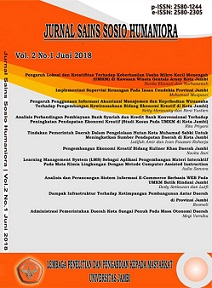The Psychological Conflicts in the Film in the Heart of the Sea (2015): A Psychological Approach
DOI:
https://doi.org/10.22437/jssh.v7i2.25177Keywords:
essex crewship, psychological conflicts, watsonAbstract
This study aims to analyze a psychological conflict experienced by the crew of the Essex ship in the film in the heart of the sea (2015) which is based on the legend of the Moby Dick. In this study, researchers used the behavioristic of John Broadus Watson. This research is included in qualitative research with a focus on the relation between literature and psychology by means of psychological criticism in categories such as psychoanalysis the author, reader and text also the Psychology and the creative process, Psychoanalysis and biography by using psychoanalysis. The data analysis technique in this research is descriptive analysis. From this study, found findings based on the formulation of the problem. First, what behavior can be observed in the psychological conflicts that occur in the crew of the Essex ship. . According to Watson, the only meaningful data in psychology is behavior that can be observed and measured objectively. Second, how the environment can generate the behavior of the characters. Watson believed that behavior is the result of the environmental factors that influence an individual’s learning and experience. Watson emphasized the role of conditioning, or the process of learning through association, in shaping behavior. What the crew of the Essex ship experienced in the movie "In The Heart of The Sea" (2015) was not only internal factors between other individuals, but also external factors such as natural conditions, culture and even time. Third, to identify the process of stimulus and response from the character of this film. Watson's theory of behaviorism points that all behavior is learned through the process of conditioning. This process involves the formation of associations between stimuli and response
Downloads
Downloads
Published
Issue
Section
License
Copyright (c) 2023 Danang Utomo

This work is licensed under a Creative Commons Attribution-NonCommercial-ShareAlike 4.0 International License.
-
Copyright and other proprietary rights relating to the article, such as patent rights,
-
The right to use the substance of the article in own future works, including lectures and books,
-
The right to reproduce the article for own purposes,
-
The right to self-archive the article (please read out deposit policy),
-
The right to enter into separate, additional contractual arrangements for the non-exclusive distribution of the article's published version (e.g., post it to an institutional repository or publish it in a book), with an acknowledgment of its initial publication in this jurnal sains sosio humaniora.







